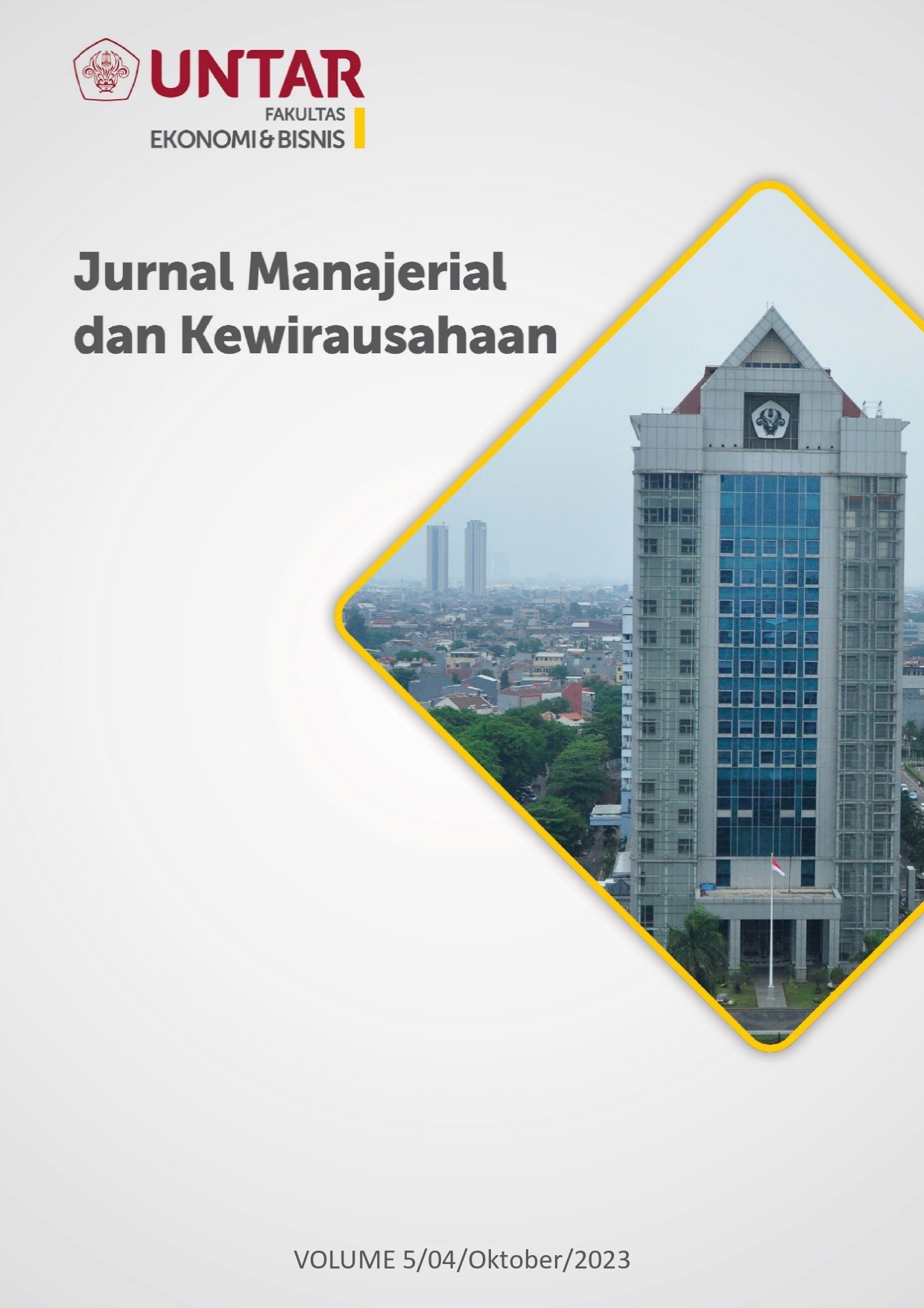Faktor-Faktor yang Memengaruhi Loyalitas Nasabah dengan Mediasi Kepuasan Nasabah pada PT Bank Seabank Indonesia
Main Article Content
Abstract
With the rapid developments in the banking industry, competition is inherent and often occurs. The large number of branch offices and new banks has made competition in banking more difficult. Creating customer satisfaction is an important thing that must be created by banking companies. The purpose of this research is to find out whether promotion, service quality, and brand image can influence customer loyalty by mediating customer satisfaction. A total of 158 respondents were successfully collected through online questionnaires. Sampling using non-probability sampling and purposive sampling. This study uses the PLS-SEM (Partial Least Square-Structural Equation Modeling) program. The results of this study indicate that promotion has no significant effect on customer satisfaction. Service quality and brand image have a positive and significant impact on customer satisfaction. Promotion has no significant effect on loyalty. Service quality and brand image have a positive and significant influence on customer loyalty. Promotion has no significant effect on customer loyalty through customer satisfaction. Service quality and brand image have a positive and significant impact on customer loyalty through customer satisfaction.
Article Details

This work is licensed under a Creative Commons Attribution-NonCommercial-ShareAlike 4.0 International License.
This work is licensed under a Jurnal Muara Ilmu Ekonomi dan Bisnis Creative Commons Attribution-ShareAlike 4.0 International License.,/p>
References
Febriany, D., Tjipto, J. D., Immanuel, S., Buana, S. A. M., Emerald, S., & Keni, K. (2022). Formation of Consumer Impulsive Buying in MSMEs through Online Shopping Activities. Jurnal Komunikasi, 14(2), 507-521. https://doi.org/10.24912/jk.v14i2.20271
Hair, J. F., Hult, G. T., Ringle, C. M., Sarstedt, M., Danks, N. P., & Ray, S. (2021). Partial Least Squares Structural Equation Modeling (PLS-SEM) Using R. Cham, Switzerland: Springer Nature Switzerland AG. https://doi.org/10.1007/978-3-030-80519-7
Hair, J. F., Ringle, C. M., & Sarstedt, M. (2011). PLS-SEM: Indeed a Silver Bullet. Journal of Marketing Theory and Practice, 139-152. https://doi.org/10.2753/MTP1069-6679190202
Hair, J. F., Sartedt, M., Hopkins, L., & Kuppelwieser, V. G. (2014). Partial least squares structural equation modeling (PLS-SEM): An emerging tool in business research. European Business Review Vol. 26, 106-121. https://doi.org/10.1108/EBR-10-2013-0128
Reinartz, W., Haenlein, M., & Henseler, J. (2009). An Empirical Comparison of the Efficacy of Covariance-Based and Variance-Based SEM. International Journal of Research in Marketing, 332-334. https://doi.org/10.1016/j.ijresmar.2009.08.001
Sekaran, U., & Bougie, R. (2016). Research Methods for Business: A Skill Building Approach Seventh Edition. United Kingdom: Wiley.



